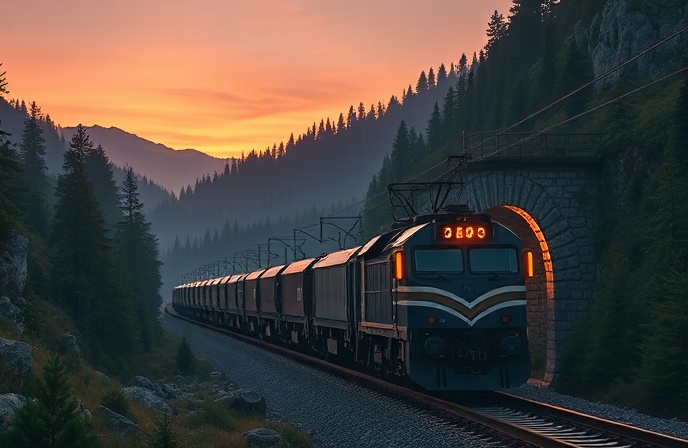Hitachi Rail’s N100: Modernizing Tobu Railway

Hitachi Rail’s N100 Express Trains: Modernizing Tobu Railway’s Service
This article examines the significant upgrade to Tobu Railway’s (Tobu Tetsudō) express train fleet with the introduction of the new N100 series, manufactured by Hitachi Rail. This project represents a substantial investment in improving passenger experience and operational efficiency on a vital tourist route connecting Tokyo to the popular destinations of Nikko and Kinugawa. We will delve into the design features of the N100, the technological advancements incorporated, the replacement of the older Spacia 100 series, and the broader implications for Tobu Railway’s overall service strategy and sustainability commitments. The introduction of these new trains highlights the ongoing evolution of railway technology in Japan and the importance of providing modern, comfortable, and environmentally conscious transportation for millions of passengers annually. The project also underscores the strong partnership between Hitachi Rail and Tobu Railway, a collaboration built on decades of successful collaborations.
Design and Features of the N100 Series
The N100 trains, built at Hitachi Rail’s Kasado Works, are designed to replace the aging Spacia 100 series, which have been in service since 1990. Operating in a six-carriage formation, each N100 train boasts 212 seats. A key design element is the incorporation of a “heart-warming design” inspired by traditional Japanese crafts, creating a visually appealing and culturally relevant aesthetic. Passenger comfort is prioritized with the inclusion of spacious swivel recliner seats and designated compartment rooms, branded “SPACIA,” offering enhanced privacy. Furthermore, amenities such as a cafe counter and lounge areas contribute to a premium passenger experience, reflecting Tobu Railway’s commitment to providing a high-quality service on these popular tourist routes.
Technological Advancements and Sustainability
While specific technological details are limited, the N100 project implicitly signifies an upgrade in several key areas. The replacement of older rolling stock suggests improvements in energy efficiency, leading to reduced operational costs and a smaller environmental footprint. The statement by Hitachi Rail emphasizes the trains’ commitment to being “safe, comfortable, environmentally friendly, and pleasant,” hinting at advancements in safety systems, materials used, and potentially the incorporation of regenerative braking technologies. Further information on the specific technologies utilized is expected to be released as the project progresses. The commitment to environmental friendliness aligns with global efforts toward sustainable transportation and underscores Hitachi Rail’s broader corporate sustainability strategy.
Operational Impact and Route Significance
The N100 trains will operate on the Tobu Railway line connecting Tokyo to Nikko and Kinugawa, a route that serves a significant tourist population. With an estimated 12 million annual visitors to these destinations, the improved passenger experience offered by the N100 trains is crucial for maintaining and enhancing Tobu Railway’s competitiveness. The introduction of these modern, comfortable, and well-appointed trains is likely to enhance the overall travel experience, potentially attracting more tourists and generating higher revenues. The successful implementation of the N100 project showcases Tobu Railway’s strategic vision in investing in infrastructure improvements to better serve its customer base and maintain its position in a competitive market.
Hitachi Rail’s Role and Long-Term Partnership
Hitachi Rail’s selection as the manufacturer of the N100 trains highlights the company’s expertise in designing and building high-quality rolling stock. Their statement emphasizes their pride in the project and their commitment to collaboration with Tobu Railway. The long-standing relationship, evidenced by the prior delivery of over 500 commuter cars (A-train), underscores the trust and mutual benefit derived from this ongoing partnership. This successful collaboration demonstrates the ability of Hitachi Rail to adapt to the specific needs of different railway operators while maintaining a high standard of quality and innovation. The successful delivery of the N100 series will likely strengthen this collaboration and potentially pave the way for future joint ventures.
Conclusions
The introduction of the Hitachi Rail-built N100 express trains marks a substantial advancement for Tobu Railway. The replacement of the Spacia 100 series with these modern, passenger-focused trains represents a significant investment in improving the travel experience for millions of passengers annually. The N100 trains boast a refined aesthetic inspired by traditional Japanese crafts, along with enhanced passenger amenities such as spacious seating, “SPACIA” compartment rooms, and a cafe counter. Beyond the improvements in passenger comfort, the project likely incorporates various technological advancements focused on energy efficiency, safety, and environmental sustainability. This aligns with global trends toward greener transportation solutions and reinforces Hitachi Rail’s commitment to environmentally friendly practices. The strong partnership between Hitachi Rail and Tobu Railway, built on a history of successful collaborations, ensures the effective implementation and ongoing maintenance of this fleet upgrade. The successful deployment of the N100 series is expected to have a positive impact on Tobu Railway’s operational efficiency, customer satisfaction, and overall revenue generation on the crucial Tokyo-Nikko-Kinugawa route. The project serves as a prime example of successful collaboration in the rail industry, driving innovation and enhancing passenger experience while adhering to sustainable practices. This successful implementation will likely set a benchmark for future railway modernization projects in Japan and beyond.


